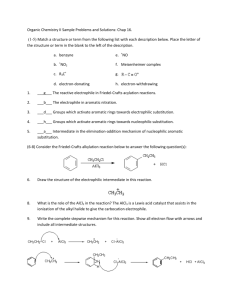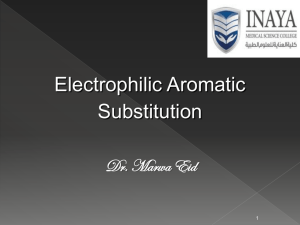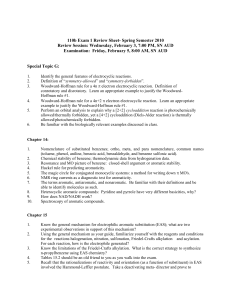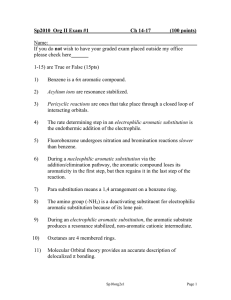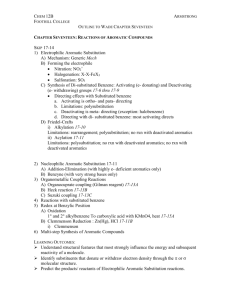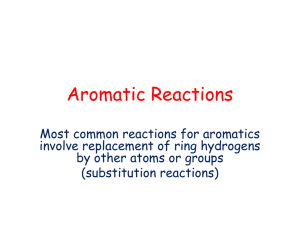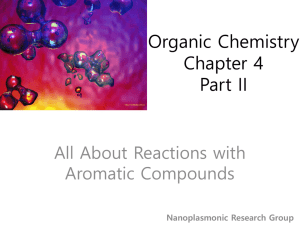AROMATIC CHEMISTRY I
advertisement
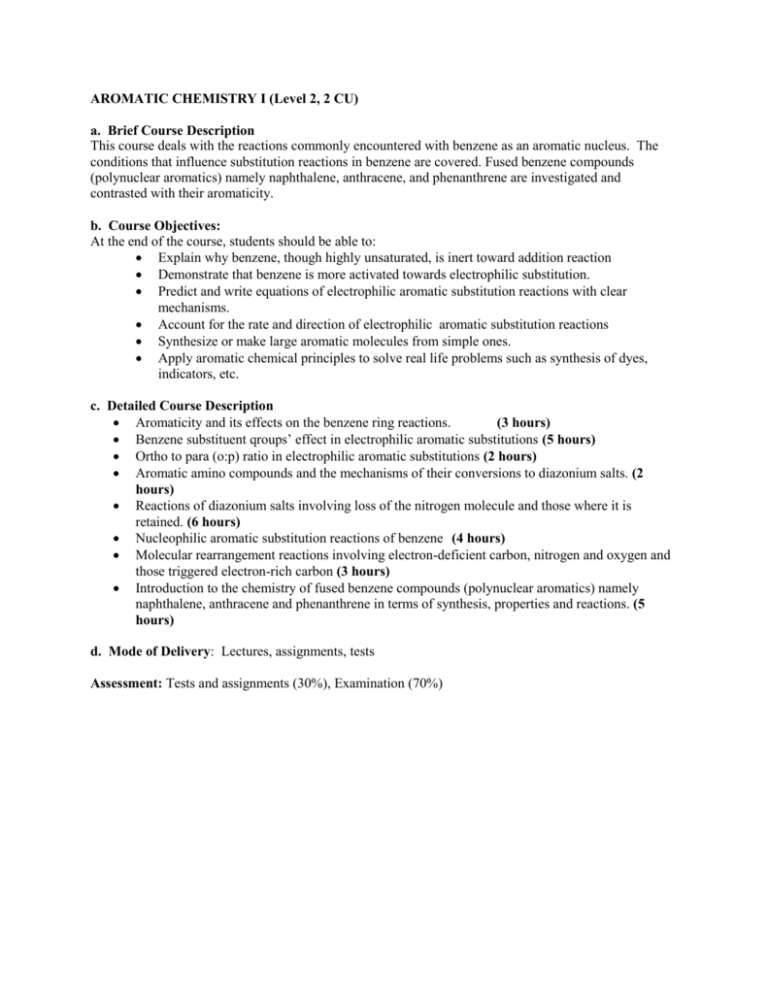
AROMATIC CHEMISTRY I (Level 2, 2 CU) a. Brief Course Description This course deals with the reactions commonly encountered with benzene as an aromatic nucleus. The conditions that influence substitution reactions in benzene are covered. Fused benzene compounds (polynuclear aromatics) namely naphthalene, anthracene, and phenanthrene are investigated and contrasted with their aromaticity. b. Course Objectives: At the end of the course, students should be able to: Explain why benzene, though highly unsaturated, is inert toward addition reaction Demonstrate that benzene is more activated towards electrophilic substitution. Predict and write equations of electrophilic aromatic substitution reactions with clear mechanisms. Account for the rate and direction of electrophilic aromatic substitution reactions Synthesize or make large aromatic molecules from simple ones. Apply aromatic chemical principles to solve real life problems such as synthesis of dyes, indicators, etc. c. Detailed Course Description Aromaticity and its effects on the benzene ring reactions. (3 hours) Benzene substituent qroups’ effect in electrophilic aromatic substitutions (5 hours) Ortho to para (o:p) ratio in electrophilic aromatic substitutions (2 hours) Aromatic amino compounds and the mechanisms of their conversions to diazonium salts. (2 hours) Reactions of diazonium salts involving loss of the nitrogen molecule and those where it is retained. (6 hours) Nucleophilic aromatic substitution reactions of benzene (4 hours) Molecular rearrangement reactions involving electron-deficient carbon, nitrogen and oxygen and those triggered electron-rich carbon (3 hours) Introduction to the chemistry of fused benzene compounds (polynuclear aromatics) namely naphthalene, anthracene and phenanthrene in terms of synthesis, properties and reactions. (5 hours) d. Mode of Delivery: Lectures, assignments, tests Assessment: Tests and assignments (30%), Examination (70%)

